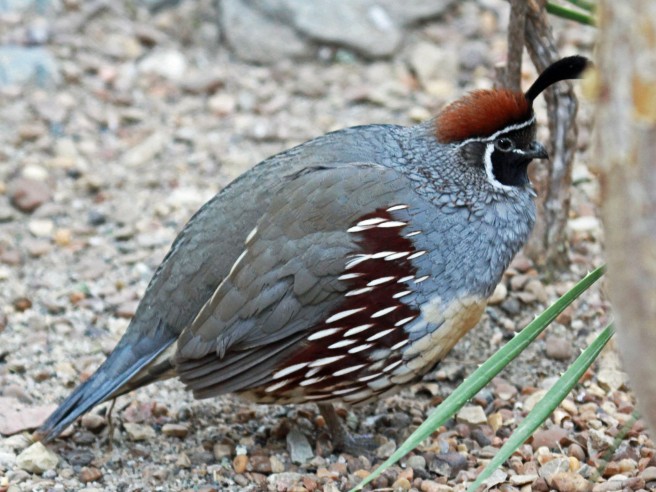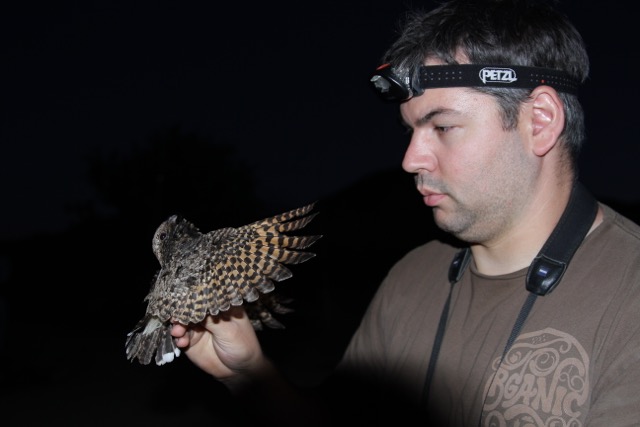
In January 2014 more than 100,000 megabats died in the Australian state of Queensland. The cause? Heat.
That summer, a heatwave passed through Queensland causing temperatures to reach highs of nearly 45°C (113°F). Unable to cope with the extreme heat and subsequent dehydration, megabats, or flying foxes as they’re known locally, started dropping from the sky. On one extremely hot day, researchers recorded at least 45,500 dead bats in southeast Queensland.
“Most of the stuff you read about on climate change [talks about] average monthly temperature or average annual temperature rising by two degrees. But what’s also going to happen is the occurrence of extreme events is going to increase—in frequency and in intensity,” says Dr. Alex Gerson, an assistant professor in the department of biology at the University of Massachusetts, Amherst. “So what’s a desert going to look like in 100 years? Is it going to be devoid of birds completely or is something going to be able to make it?”
To answer these questions, researchers need a better understanding of how vulnerable species respond to intense heat. The “Hot Birds” project in Gerson’s lab, a continuation of the work he did as a postdoctoral fellow with Dr. Blair Wolf, a professor of biology at the University of New Mexico, and his PhD student Eric Smith, aims to provide just that. The team surveyed 45 bird species from the Sonoran Desert in Arizona, the Kalahari Desert in South Africa and the Gluepot Reserve in Australia in an effort to understand how birds cope when environmental temperatures rise and exceed their own body temperatures. The researchers wanted to know, just how hot is too hot?

Birds are particularly vulnerable to extreme heat because they are active during the day when temperatures are highest and unlike their mammalian neighbours, they cannot burrow underground to stay cool. “They don’t really have any mechanism to escape the heat,” says Gerson. “It’s a heatwave, you’re out there during the day and the bird is still sitting in a tree dealing with it.”
When air temperature surpasses a bird’s body temperature, the only way for it to stay cool is by evaporation. Evaporation can occur in one of two ways – panting or sweating. Most birds keep cool by panting. With each pant, hot air is moved through the lungs and airways where it evaporates water from the moist surfaces lining the respiratory tract. Panting is pretty good at evaporating water and dissipating heat but it is costly—all that heavy breathing requires active muscle movements and energy expenditure. In contrast, sweating allows birds to stay cool with relatively little effort by evaporating water directly from their skin. Unlike mammals, birds do not have sweat glands. For a long time researchers thought that birds did not sweat but we now know that certain birds including pigeons and doves rely predominantly on sweating to cool themselves when the weather gets hot.
When researchers first started studying how birds respond to high or low temperatures, they would capture birds in the wild, bring them into a lab, let them settle in for a bit and then do their tests. For their studies, Gerson and his colleagues wanted to know how the birds would fare in a more realistic setting so they brought the tests to the birds. “We wanted to know how a wild bird performs in the middle of summer when these [extreme heat] events are happening,” he says. “We wanted to mimic reality as closely as possible. The easiest way to do that was to set up a lab in the desert.”
At each site, the researchers built their own environmental chamber using equipment they had brought with them and locally sourced parts. A heating device allowed them to precisely control the temperature in the chamber while a laptop and pumps controlled airflow and humidity levels. The chamber itself was either purchased or built on site. Sometimes it was an insulated ice chest; other times it was a box the researchers built themselves with planks of wood. As dry air was pumped into the chamber, the spent air was pumped out into analyzers that measured how much carbon dioxide and water was in the air. The chambers were also outfitted with an infrared light and video camera so the researchers could directly monitor the bird for signs of distress.
Each bird was placed inside the environmental chamber where the temperature was slowly increased in 2°C increments. At each temperature, the researchers measured the amount of carbon dioxide in the air leaving the chamber to determine how the bird’s metabolism changed as the temperature rose. They also measured the humidity level in the air to see how much water was lost to evaporation as the bird tried to stay cool.

In the first paper published on data from the “Hot Birds” project, the researchers compared the heat tolerance of three bird species with different cooling strategies. Gamble’s quail uses panting, or respiratory evaporation, whereas the mourning dove and white-winged dove rely on sweating, or cutaneous evaporation. All three species reside in the Sonoran Desert where summer temperatures regularly exceed 40°C (104°F).
Their data highlight the pros and cons of each strategy. By sweating it out, the doves were able to tolerate temperatures as high as 60°C (140°F). (As a point of reference, the resting body temperature of doves and quails is 41°C.) “The doves were pretty surprising,” says Gerson. “They’re able to maintain a relatively stable body temperature because they can evaporate a lot of water easily without much metabolic input.” The downside of this strategy is that the doves also need to consume more water. As climate change increases the occurrence and severity of droughts, doves may be forced to find more water-rich food sources or search wider for water to support their high water lifestyle.
On the other hand, the quails could only tolerate temperatures up to 50°C (122°F). Their metabolism also started increasing at a lower temperature, presumably when they started panting to stay cool. “Quails are not nearly as heat tolerant but they’re a little more efficient in their water use,” he says. “The quantity of water evaporated is less so at lower temperatures, they may actually be better off [than doves].” However, once the temperature surpassed the quail’s upper limit, their water loss and metabolism went through the roof as they struggled to keep cool.
Climate scientists and conservationists often use models to predict how populations and ecosystems will shift with climate change. One of the limitations of these models is that they rarely take into account physiological data on how animals adapt to changing temperatures. Gerson and his colleagues are still crunching the numbers and analyzing the data from the remaining 42 species but when they are finished, their work will provide a global comparison of the vulnerability of birds living in hot places and contribute to a broader understanding of heat tolerance in those species. Studies like this are important because they provide valuable information that can help us predict and perhaps mitigate the impact of climate change on ecological communities.
So how will the quails and dove fare in the face of climate change?
“I think the doves are going to be just fine,” says Gerson. “In the grand scheme of things, I think the quail are going to do pretty well too.”
Reference: Smith EK, O’Neill J, Gerson AR, & Wolf BO (2015). Avian thermoregulation in the heat: resting metabolism, evaporative cooling and heat tolerance in Sonoran Desert doves and quail. The Journal of experimental biology, 218 (Pt 22), 3636-46 PMID: 26582934
